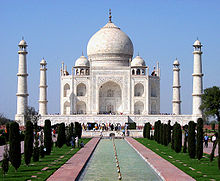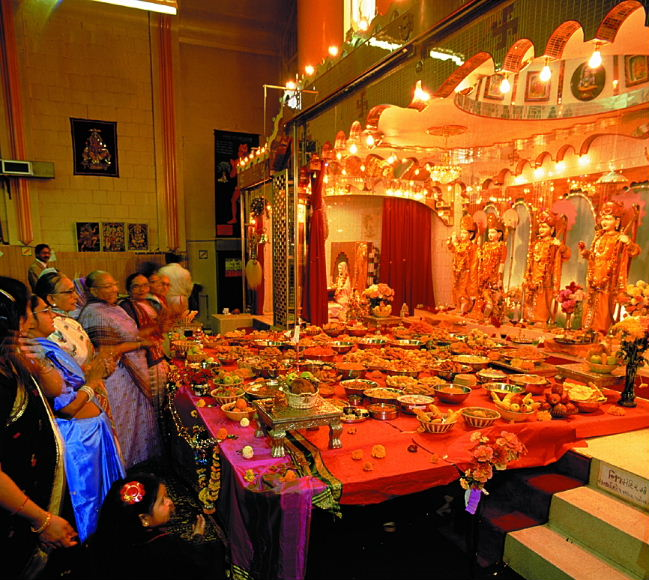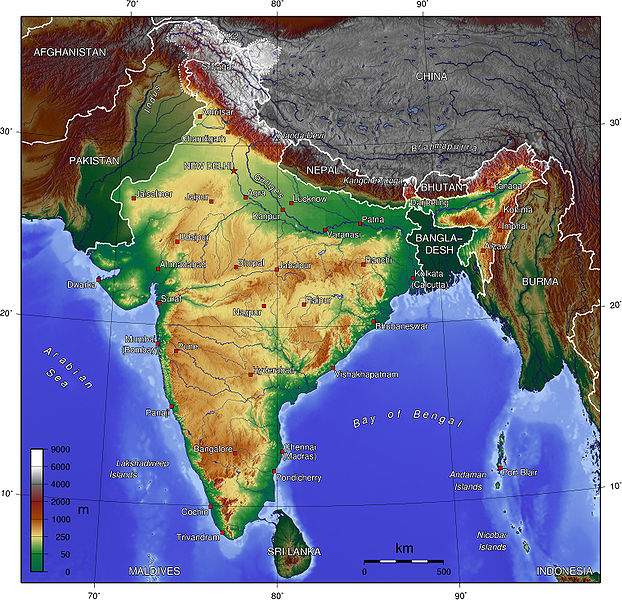Introduction
“A market analysis is aimed at determining the attractiveness of a market and understand its evolving threats and opportunities as they relate to those of a business” (Chakravarty 34). Market size and activity can be evaluated based on present or potential trade factors in a country. Relevant factors when analyzing a market include economical, political, environmental, cultural, social, demographic, and cultural factors. Sources of data for comprehensive market analysis include government statistics, customer surveys, non-governmental organizations research, trade associations data, financial data from financial bodies and stock markets, and many other sources depending on the reason for the analysis. For business purposes, key parameters to focus on include the market size, income levels, purchasing power, demographics, sex, and any other factor which may prove relevant in determining a country’s business potential. Available opportunities, risks, and government regulations are also key in deciding the viability of doing business in a certain market. This paper will focus on the Indian market and its key parameters.
The Indian market
Background
“India is the seventh-largest country in the world by geographical area and is the second-largest by population” (Indian Government 3). The country has a population of 1.2 billion people and is considered among the most democratic nations in the world. It is bounded by the Indian Ocean and the Arabian Sea on the south and north respectively. It borders Pakistan on the west and the Bay of Bengel on the east. Fig. 3 shows a topographic photo of India. The majority of Indians practice Hinduism followed by Buddhism. It is a federal constitutional republic with 28 states all represented in parliament. India also has the most multilingual society with over 400 different languages spoken by different communities in the country. “Economically, India is the world’s eleventh largest in the world by nominal GDP and fourth by the purchasing power parity” (The World Bank 3).
India’s climate presents a good environment for farming activities and a comfortable place to live in. Its biodiversity makes it home to a big percentage of mammalians, avian, reptilian, amphibians, fish, flower, and other crops species. Dense forests cover 12% of the countries land and they are home to many species. Due to its good weather and biodiversity, it is a favorite destination for many tourists. In recent years, human encroachment has forced the country to establish protection mechanisms such as national parks and having protected areas.
Environmental overview
Economical factors
According to The World Bank, “India’s nominal GDP stood at US$ 1.43 trillion with a purchasing power parity of US$ 4.001 trillion, making it the eleventh-largest economy in the world by GDP, and fourth by the purchasing power parity” (3). In the last two decades, India has had a 5.8% GDP growth rate, making it the fastest-growing economy in the world today. Currently, the country’s economic system can be described as a capitalist model due to increased private investments.
One of the market’s biggest strengths is its strong labor force, currently ranked second largest in the world with more than 450 million people. The service industry makes the biggest contribution to the GDP followed by the agricultural and industrial sectors. The country’s external trade has grown from 6% in 1985 to 29% in 2010. In 2010, its share of world trade was 1.70% and it was ranked the fifteenth and eighteenth largest importer and exporter respectively (The World Bank 3). India mainly exports textiles, chemicals, gems and jewelry, software, and leather. Its main imports include crude oil, fertilizer, gems, and industrial chemicals.
The country’s telecommunications industry is considered the fastest growing in the world, adding more than 11 million subscribers between 2008 and 2010. Its automobile industry is considered the second-fastest growing in the world, after registering a 30% increase in sales during the 2009-2010 period. Exports in the automobile industry also grew by 36% during the same period (Black 36). Despite, the impressive trends in most of its economic sectors, India is faced with major social-economic challenges. More than 40% of Indians still earn less than $1/day, putting them below the poverty line. The gap between the rich and the poor continues to grow and malnutrition is a major challenge.
Political-legal factors
“India is the most populous democracy in the world” (Indian Government 2). The country has a multiparty system with six and forty national and regional parties respectively. The country’s politics has been largely dominated by the Bhartiya Janata Party (BJP) and the Indian National Congress (INC) political parties. The constitution of India governs the country’s operations and everyone is equally represented. The president is the head of state, elected for a five-year term by the electoral college (Indian Government 2). The prime minister, who is appointed by the president is the head of government.
India has a strong judiciary system consisting of the supreme court, the high court, and the trial Court. The country’s foreign relations are cordial with most nations. It has strategic relations with Russia, Israel, and France, a factor considered key to the country’s defense mechanisms. In recent times, it has played a key role in promoting regional security and fostering economic development. Democracy and a good judiciary system have allowed free, vibrant, and strong media.
Sociocultural overview
Demographic factors
“India has an estimated population of 1.2 billion people, making it the world’s second-most populous country” (Indian Government 1). Due to improved medical services and an increase in its agricultural productivity, the country has experienced a rapid increase in population in the last 50 years. An approximated 50% of the country’s population lives in rural areas, a number expected to decrease rapidly in the future due to increased demand for labor in the industrial sector. India has more than 27 million cities, Mumbai being the largest.
National literacy levels stand at 65% ( 54% for females and 75% for men). Kerala state has the highest literacy rate at 91% while Bihar state has the lowest at 46.3%. There are 940 females for every 1000 males and 22 births per 1000 people per year. The country currently has a 1.4 population growth rate per year and a median age of 25 (Indian Government 1).
Even though the country enjoys a modern and diverse healthcare system, good health is a challenge for many Indians, especially children. Due to high poverty levels, malnutrition is common among children, who then grow up with weak immunity. Pollution and water contamination are major concerns and the World Health Organization estimates that they cause the death of 900,000 people in India each year. For every 100,000 people in India, there are 60 physicians.
Cultural factors
The country’s culture is diverse and marked with pluralism. 74% of Indians speak Indo-Aryan and 20% speak Dravidian. The remaining percentage speaks languages with a foreign origin. A majority of the population practices Hinduism, followed by Muslims, Christians, Sikhs, Buddhists and other small religions and cults. The country’s architecture represents its diverse culture with a blend of ancient and modern designs. Ancient buildings still stand to remind generations of ancient designs and are a big tourists attraction. Fig 1 represents an Indian building listed as one of UNESCO World Heritage Site. Poetry and art also make a big part of the country’s traditions and culture.
India is known for major national festivals put in place to for different celebrations. These festivals attract big crowds offering buyers and sellers big opportunities. Bakrid festival is the most important festival for people who practice Islam in India and all over the world (Indian Government 4). In India, the festival is very exciting due to the large number of people who participate. The Diwali festival is celebrated nation-wide. The festival attracts a huge number of tourists and projects the glorious history of the country.
“The Ganesh Chaturthi festive is the day when Indians celebrate the birth of Ganesha, the god of wisdom, prosperity and good fortune” (-Indian Government 4). It lasts ten days and offers good business opportunities for traders due to tourism activity. India’s cuisine is characterized by staple foods (wheat and lentils) and a wide variety of species and herbs. Music and dance is common especially during the many festivals that take place every year. Sporting is big and the country’s national sport is field Hockey. Cricket is the most successful game in the country currently.
Market characteristics and opportunities
The country’s business opportunities arise from a sustained process of liberalization, which has been going on since 1991.In the last ten years, the country’s GDP has been on the rise except for 2008 due to the financial global crisis. The country’s openness to foreign trade in recent years also offers opportunities for investors and offers a more liberalized market. International competitiveness and globalization has stimulated India’s market growth, leading to a strong balance of payments and a healthy build up of economical reserves. All these factors present investors with opportunities to be part of such a rapidly growing market.
Major sectors/industries
The service industry makes the biggest contribution to the GDP, accounting for 54%. The agricultural and industrial sector account for 28% and 18% respectively. “Major industries include telecommunications, steel, textiles, mining, food processing, cement mining, petroleum, machinery and software” (Jeyaseeli and Benjamin 13). Rice, cotton, oilseed, and wheat are the main agricultural products although the country also does well in tea, potatoes and sugarcane among many other products produced on a small scale level. India is particularly known for a variety of spices and traditional herbs, mostly grown by smaller communities.
Major companies
The biggest company in India by revenue is Reliance Industries followed by State Bank of India and Oil and Natural Gas Corporation at number two and three respectively. Banking, oi, telecommunication and steel industries make a majority of the 50 biggest companies in India. Major private companies include Tata Steel and Larsen & Toubro in the capital goods industry. The biggest multinational companies in the country include IBM, Microsoft, Coke, Pepsi Co., Nokia communication, British petroleum, among others.
Basic business customs
Business laws in India are guided by the Companies Act, 1956. The legislation allows the Central Bank of India to regulate and monitor the functioning of businesses in the country (Business Knowledge Resources 3). As an entrepreneur, one is required to practice business ethics such as honesty and integrity. To start and run a business in the country, one must have legitimate interests and operate within the country’s laws. Proper standards of accounting are also a must and so is proper and regular auditing.
The country requires that one acquires all the necessary business licenses. Most of the licenses are processed and given through the ministry of commerce and industry, the central board of excise, customs and different municipal offices. Like most countries, security and environmental issues are a major concern. For this reason, businesses transactions must not pose any threats to the national security or the environment. Some of the basic requirements for a business in the country include a tax account number, digital signature certificate and the registration fee. Business ethics such as being honest and treating customers well apply.
Special marketing customs and issues
A large population in India is poor and lives in rural areas. This poses a major challenge for marketing, especially for products aimed for the mass market. However, the country’s telecommunication industry has seen a radical growth in recent years, allowing marketers to reach a large number of people through mobile devices. Traditional advertising such as radio and television are still the most common modes of marketing for many businesses in the region. Billboards and banners are still common especially for those business trying to reach rural markets.
The younger generation is slowly changing the trend by embarrassing modern methods of communication such as mobile phones and social networks. This has given business a better platform to reach bigger masses at a cheaper cost. As the telecommunication industry grows, the number of people using the internet is also on the rise. More than ten million people in the country today own a mobile phone. Companies are therefore utilizing short messages, internet videos and other forms of advertising possible through mobile phones to reach consumers.
Conclusion
Any business willing to launch in a new market would need a market analysis to help determine who the customers are in the market and what they want from different products. “The dimensions of interest when doing a market analysis include the market size, its growth rate, trends, profitability, its cost structure, success factors and distribution channels” (Chakravarty 34). From the analysis, the Indian market is a lucrative opportunity for any entrepreneur looking for a big and diverse market. Its population size is definitely an asset for entrepreneurs in the region. A big population feeds the labor market and allow businesses bigger target markets. The culture is diverse and literacy levels are fair. The county’s economy is considered the fastest growing in the world, offering a big opportunity for investors.
Works cited
Black, Ken. Business Statistics and Contemporary Decision Making: Case study India. Hoboken, NJ: Wiley, 2011. Print.
Business Knowledge Resources. Starting a Business in India: Companies Act, 2011.
Chakravarty, Indranil. Market Analysis: India: A Comprehensive Study of the Market. Munich: Export-Union of German Cinema, 2007. Print.
Indian Government. Doing business in India, 2011.
Jeyaseeli, Kiruba and Benjamin Levi. Market Entry Strategies of Foreign Telecoms Companies in India. Wiesbaden: Dt. University, 2009. Print.
The World Bank. Business Environment in India, 2011.
Appendices



